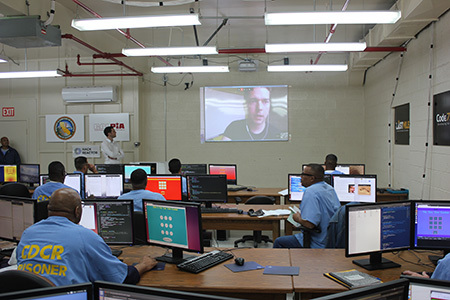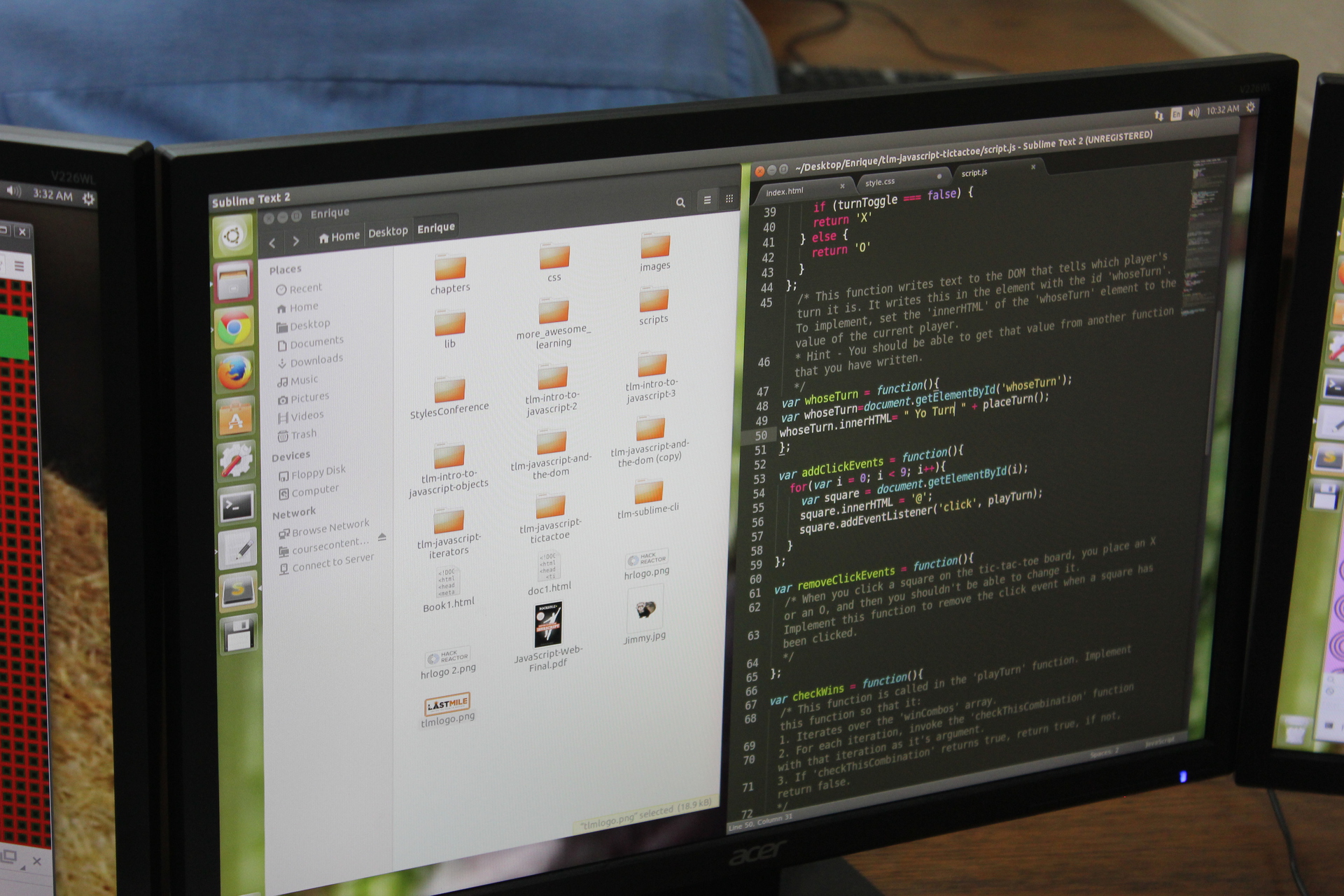In prison with an incubator startups are now taught to program
In the prison of Silicon Valley organized video lectures
 The main problem of the punishment system in criminal law remains a high percentage of recidivism and re-entering prisoners in the penitentiary institution. And they are actively fighting this, trying to arrange the future life of prisoners at large.
The main problem of the punishment system in criminal law remains a high percentage of recidivism and re-entering prisoners in the penitentiary institution. And they are actively fighting this, trying to arrange the future life of prisoners at large.Sometimes the measures of this counteraction look somewhat strange and exotic, for example, two years ago , the Last Mile program was conducted for the first time in San Quentin prison, in which prisoners studied the basics of business and social media. This did not stop there: as in the actual incubator of startups, the projects of the prisoners were shown to real entrepreneurs. And there is nothing surprising in this: Silicon Valley is located one hour from this prison.
Now prisoners in the prison of San Quentin began to learn the basics of web programming. And it looks quite justified step: with such knowledge, they are quite able to settle in life. Last Thursday, the prison authorities received invitations to local media to look at how, within the framework of the project Code 7370, 18 prisoners for four months, four days a week, eight hours a day, study HTML, CSS and JavaScript. As stated, this is the first time that prisoners in the US are taught to write code.
That Thursday the trainees wrote a tic-tac-toe game. Eli Tamboura, convicted of 14 years for an armed attack, says that learning new technologies gives him pleasure. It is worth noting that he never even held a smartphone in his hands.
')
The trainees were chosen without regard to their past experience, and many of them had never worked on computer and mobile devices before. The only thing needed was ability and motivation. Of course, access to the Internet is out of the question, these are the laws. Trainees can only work with material in the classroom, all projects are stored locally.
The only deviation from the rules is how lessons are conducted: through a video conference on Google Hangouts, a teacher from Hack Reactor reads theory every day and answers students' questions. Prisoners work on decommissioned laptops with Ubuntu on board.

San Quentin State Prison is one of the state’s largest prisons, it first opened in 1852 just two years after its foundation. The prison is located north of San Francisco. For a long time, she was a high-security prison, although now her profile is mainly prisoners with mild detention conditions. Since 2006, no one has even been executed there. The prison has its own newspaper, a college in the territory and two baseball teams, so it is not surprising that something like this to the programming training project happened there.
The authors of Code 7370 are the same organization of The Last Mile . Since 1982, under the leadership of the California Prison Industry Authority (CALPIA), prisoners have retrained to produce many things: from car plates to coffee . According to CALPIA reports, the usual recidivism rate of 61% falls by 26% —38% .
The project is somewhat intricately named: 7370 is the programming code in the standard list of US industries . Perhaps the project will be conducted in other prisons in California or even outside the state, if the experiment is considered successful. Sean Drost, commercial director of Hack Reactor, even hopes that a software development firm consisting of former prisoners will emerge.
Based on Ars Technica . Program page: https://thelastmile.org/programs/computer-programming/ .
Source: https://habr.com/ru/post/357592/
All Articles